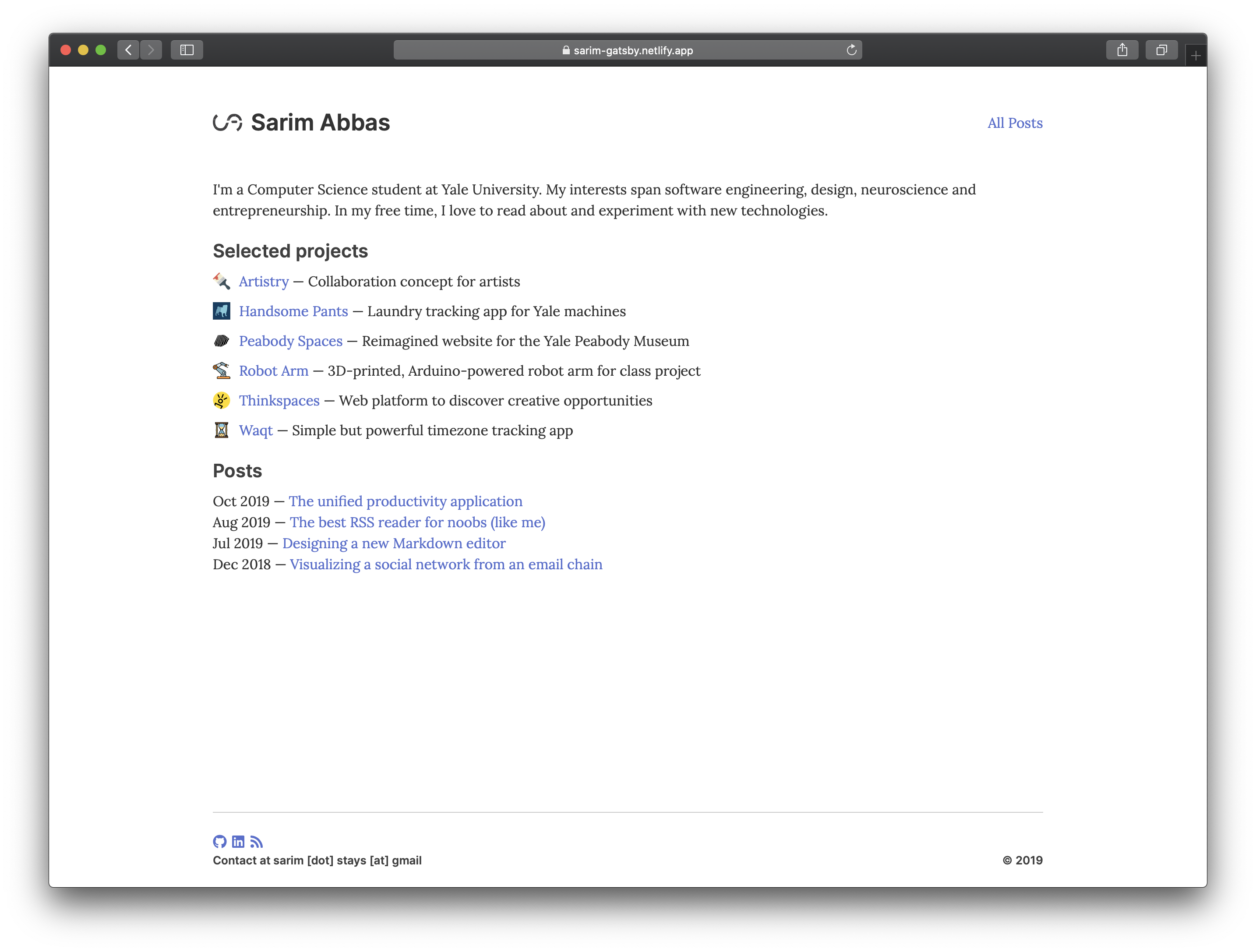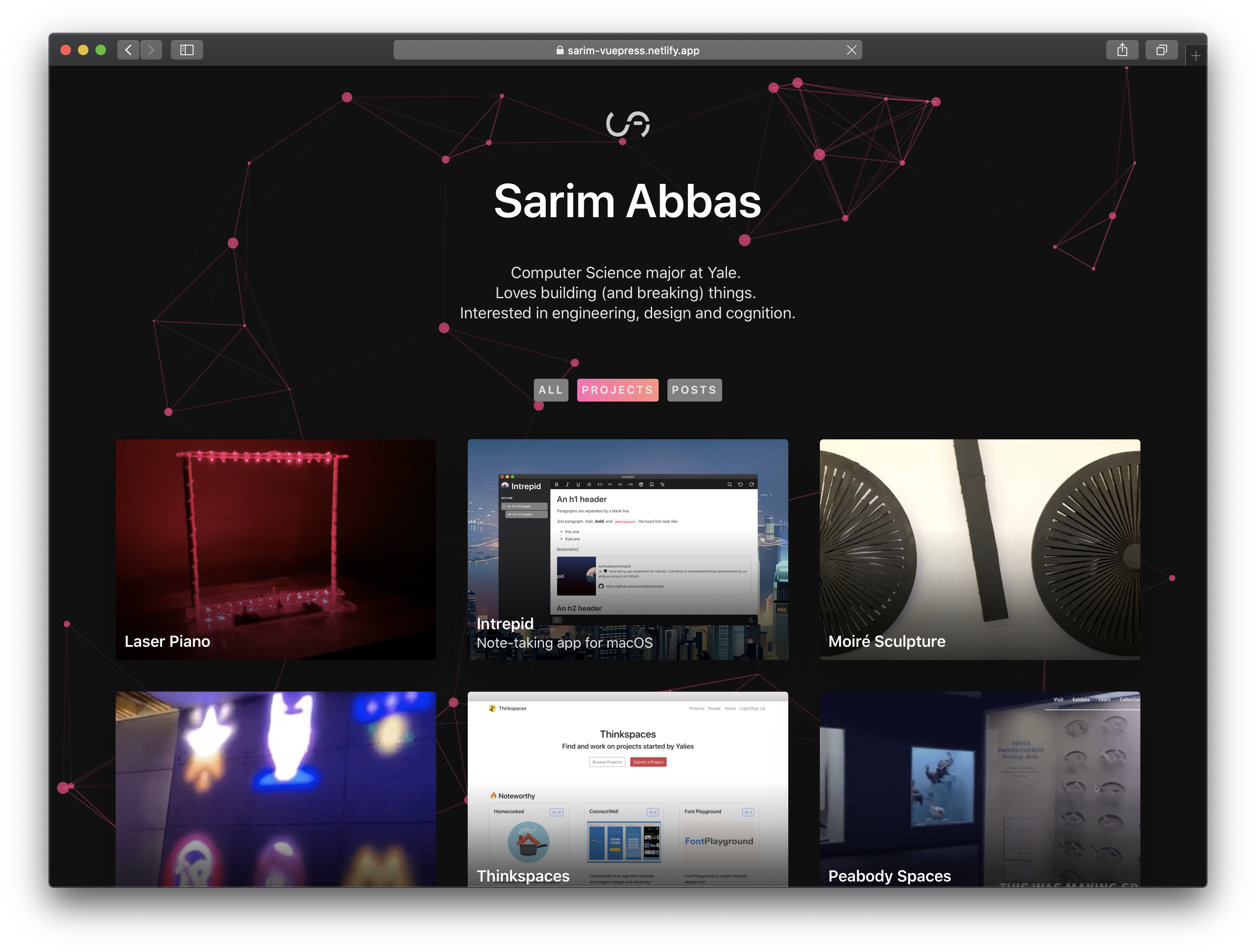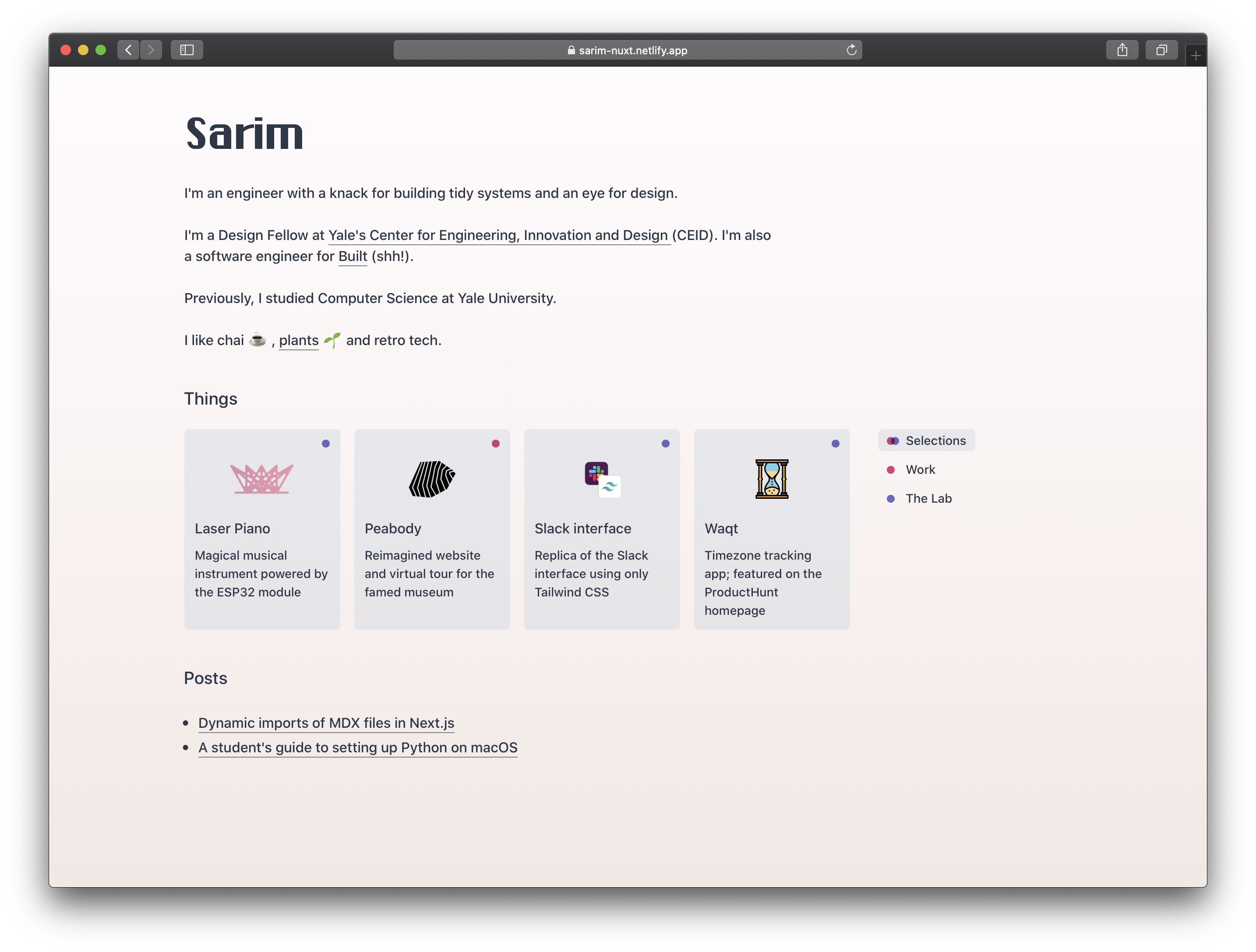Cyclical design
I've redone this website many times in the last few years. I start by getting excited about some niche feature in Hip New Framework™️, which drives the work. But it has also been interesting to see the design of my website evolve alongside the technology that powers it. Every overhaul of this website has been accompanied with aesthetic changes, inspired by the work and sensibilities of designers I admire.
When Gatsby starting gaining popularity, the website looked a little something like this:

Smitten with Vue, and deciding that Gatsby's suite of features were overkill, I moved to Vuepress:

The shift in tone was stark; the design was more flamboyant, seemingly modern, certainly more busy. Hyped about Nuxt's Content Module, I undertook another redesign:

At first glance, this website eschews the overwhelming flash of content, and seems a return to form. But it also incorporates some of the card UI from the second design that I found so appealing.
To me, web and product design is a constant reconciliation between whimsy and simplicity. It's also curious how the limitations of technology drive design choices. For example, styling Gatsby was hard because styled-components and CSS modules were still fairly new at the time, but today there are numerous options, along with new ways of thinking about CSS such as Tailwind.
But perhaps it's even more true that viral design trends constrain the choices we can make with our own work (atleast in product and web circles). The hype around neumorphism is a good example of cyclicality in design. This trend has attracted legions of ardent supporters in a few short months. Only a few years previously, skeumorphism drew the ire of flat-design supporters. But now, public loyalty swings in the other direction:



Though it sometimes may feel like needless reinvention, cyclicality in design is not a bad thing. For me, the takeaway is that design trends come and ago, and in the midst of that it is important to cultivate our own voice. The other realization, which is sometimes easy to forget, is that design is not just about form but also function. If a new iteration of an old trend can introduce elements that enhance function, that's a win in my book. Effective design can and must wield form as a means to provide better function. That's the foundation of any magical experience.